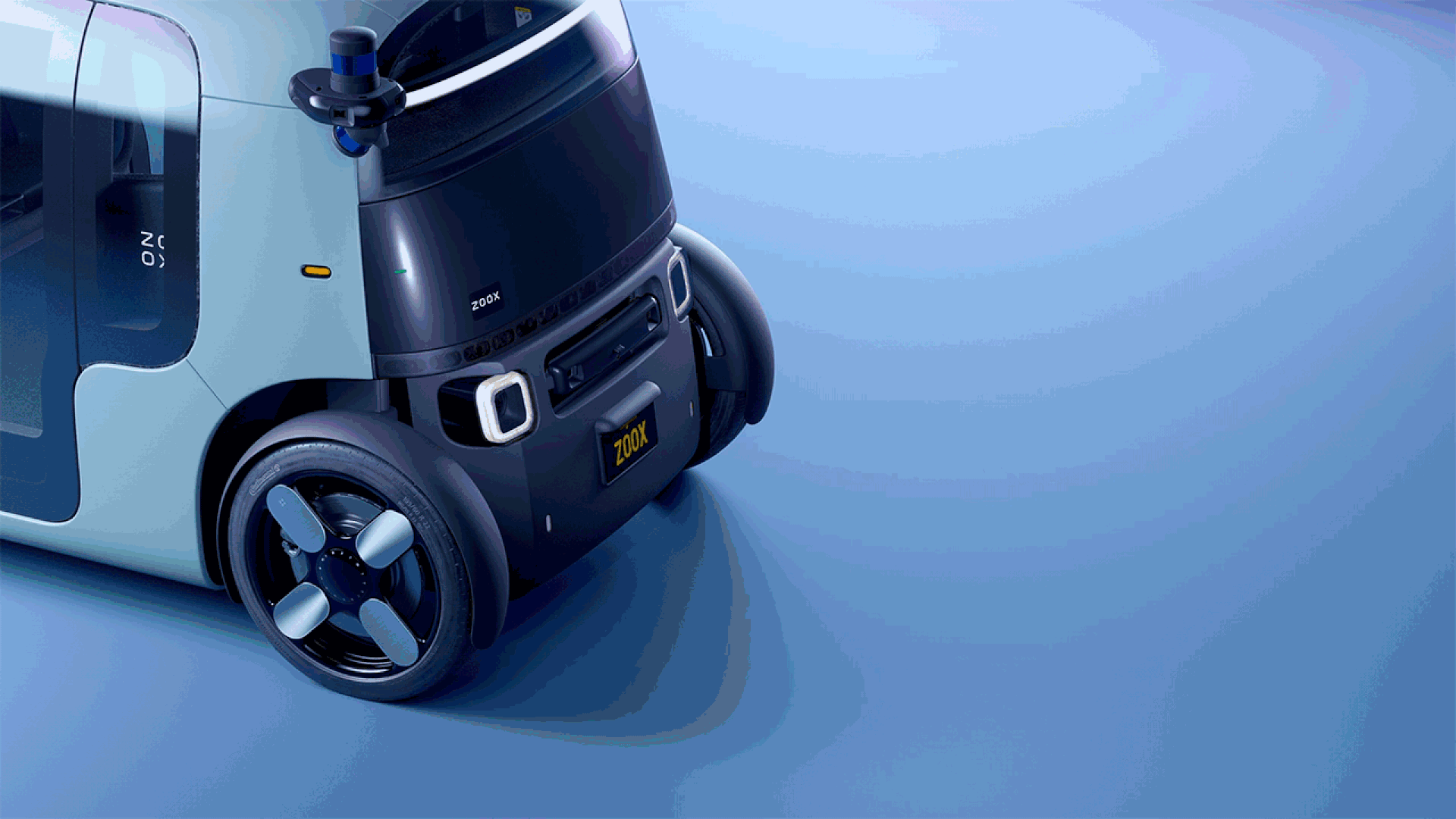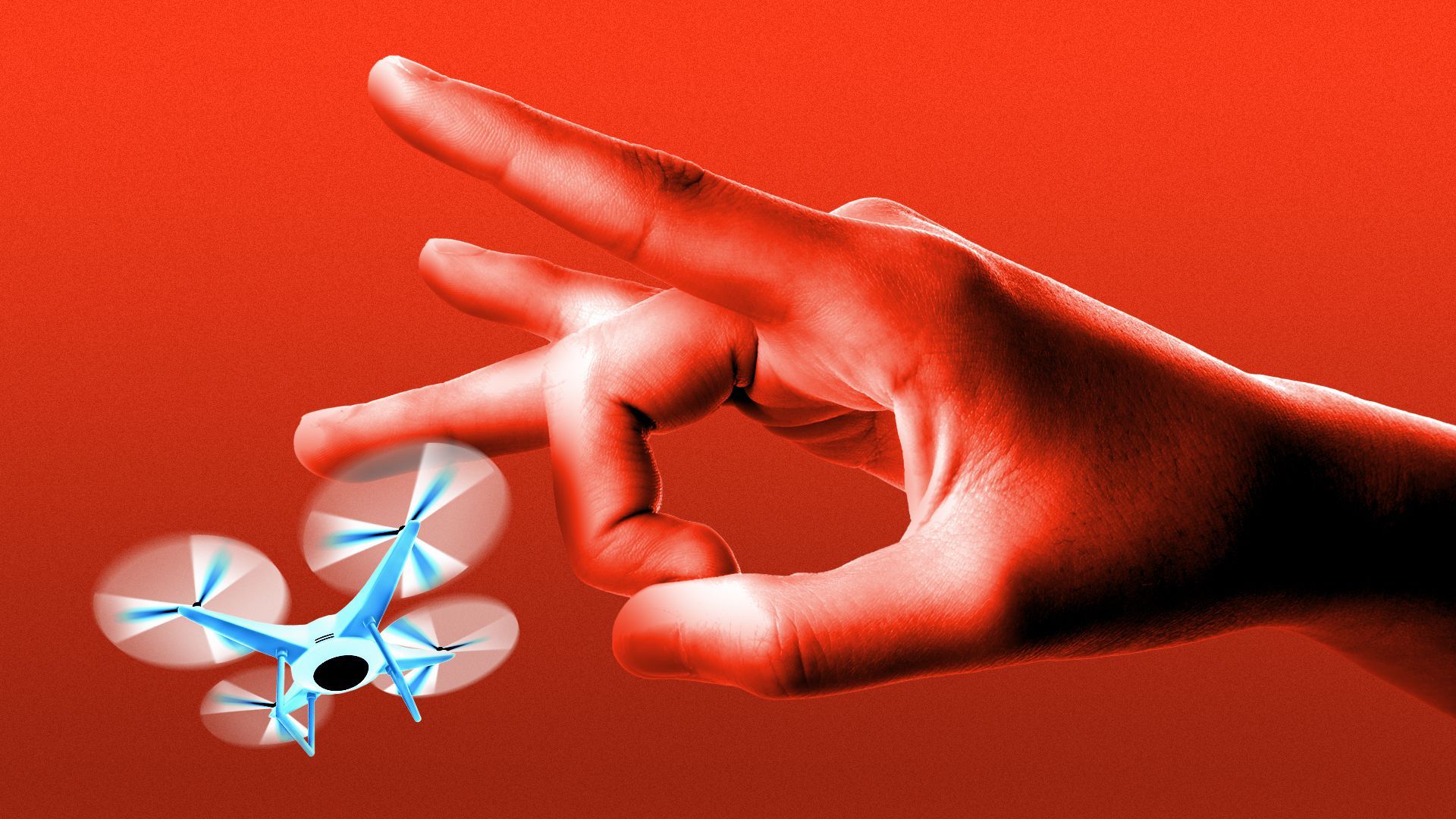| | | | | | | Presented By General Motors | | | | Axios What's Next | | By Jennifer A. Kingson, Joann Muller and Erica Pandey ·Dec 06, 2021 | | Today we bring you a finely curated editorial mix, including good news for people with visual impairments, bad news for subtitles and extra bad news for people who collect airplane barf bags. 📅 Today at 1pm ET: Join Axios HQ for a lively discussion on 2022's new rules for working — Hybrid 2.0. Register here. 📅 Tomorrow at 12:30pm ET: U.S. Energy Secretary Jennifer M. Granholm and Sen. John Hickenlooper (D-Colo.) will discuss the infrastructure bill's sweeping sustainability provisions. Register here. Today's Smart Brevity count: 1,257 words ... 4.5 minutes. | | | | | | 1 big thing: How self-driving cars will talk to humans |  | | | Zoox is developing sound patterns that can be pinpointed toward individuals to indicate the intentions of its robotaxi. Photo: Zoox | | | | Autonomous vehicle companies are exploring the use of a common language — standardized light patterns or sounds — that would help driverless cars communicate their intentions to humans, Joann Muller writes. Why it matters: Autonomous vehicles will share the road with human-driven vehicles, pedestrians and cyclists for a long time. The development of a standard communications method could build trust and reduce traffic accidents. - Unlike today's drivers, AVs can't make eye contact with other road users or gesture to indicate it's OK to cross the road.
What's happening: Argo.ai, the developer of a self-driving system, is urging fellow developers to adopt its newly released technical guidelines for safe interactions between robocars and bicyclists. - The guidelines, created in collaboration with the League of American Bicyclists, urge AV companies to incorporate bike lanes into their AI maps, for example, and to model typical cyclist behavior — like lane-splitting or swerving around an open car door — into their algorithms.
- Self-driving cars should also be programmed to slow down and create extra space when it's unclear what a cyclist might do, Argo says.
Meanwhile, companies are also trying to find a common language for self-driving vehicles. - Ford Motor, for example, developed a white light bar mounted near the top of the windshield where a pedestrian or cyclist may look for cues from a human driver.
- The company worked with researchers at Virginia Tech Transportation Institute to develop different signal patterns to indicate an AV is doing a pickup or drop-off, for example, or recognizes another road user by tracking their movement.
Zoox, meanwhile, which makes a custom robotaxi, is testing its own communication patterns using a variety of lights incorporated into its design. - The vehicle, which has no front or back, also features 32 speakers that can pinpoint sound in a specific direction to communicate with other road users.
- "We can be more intentional in the way we communicate, so we can target specific users and make sure sounds are heard by the people necessary with the right tone," Riccardo Giraldi, Zoox's senior director of product experience, tells Axios.
The bottom line: Just as everyone understands the meaning of red, yellow and green traffic lights, AVs will need to develop standard ways of communicating. Keep reading. |     | | | | | | 2. Tech helps visually impaired passengers master public transit |  | | | People with low vision can navigate public transit better with Moovit's app and WeWalk's smart cane. Photo: Moovit | | | | People with limited vision now have access to technology designed to help them independently navigate public transportation more easily, Joann writes. Why it matters: Knowing which bus just arrived or when a particular subway stop is approaching are privileges that sighted people take for granted. People with limited vision often have to rely on fellow passengers for help. What's happening: WeWALK, the maker of a smart cane for those living with sight loss, has teamed up with Intel-owned Moovit, a trip planning app, to help sight-challenged people use public transit safely and confidently. - WeWALK's smart cane, invented in 2019, has a smart device that warns users of obstacles like low-hanging tree branches, through ultrasonic sensors and a vibrating handle.
- It also has a Bluetooth connection, built-in touchpad and voice assistance, so blind pedestrians can interact with their smartphone without removing it from their pocket.
What's new: WeWALK is now integrating its smart cane technology into Moovit's transit app, which combines official information from local transit agencies with crowdsourced data to recommend the best route. - That means blind passengers can navigate to the right bus stop more easily and get real-time information to know when their bus or train is arriving.
- They can also get step-by-step accessible route guidance throughout their journey, including audio and text alerts when it is time to get off, and service alerts to re-route their journey in case of disruptions.
Read the full story. |     | | | | | | 3. Defending against drones is becoming a business |  | | | Illustration: Sarah Grillo/Axios | | | | Companies are developing ways to defend airports and other critical infrastructure from accidental incursions and deliberate attacks by aerial drones, Bryan Walsh writes in Axios Future. Why it matters: Drones provide cheap and easy ways to monitor land, deliver goods and simply explore. But as they proliferate, figuring out a method to prevent them from going where they shouldn't becomes increasingly important. Driving the news: Intelligence documents published in October indicate a small quadcopter-type drone was used in an attempted attack on a Pennsylvania power substation last year — the first known time a drone was used against the electrical grid. - Drones have been repeatedly sighted near airports, where they can interfere with takeoffs and landings. One such event shut down London's Gatwick airport for two days in 2018, and a drone attack on a Saudi airport in October injured 10 people.
- "Drones are the easiest way someone can breach security these days," says Aaditya Devarakonda, CEO of the drone defense company Dedrone.
By the numbers: Dedrone found a 217% increase in unauthorized drone access to nine selected U.S. facilities between 2019 and 2020, and it says the number has only increased since then. Read the full story. |     | | | | | | A message from General Motors | | Driving the future of America | | |  | | | | The all-electric future will be made by American labor.* From producing our revolutionary new Ultium Platform to the first electric vehicles it will power, we're investing billions not just in EVs and AVs, but in American manufacturing itself. Disclaimer: *Built from globally sourced parts. | | | | | | 4. The end of subtitles |  | | | Illustration: Shoshana Gordon/Axios | | | | AI companies are developing methods to interpret and synthesize voices in ads, movies and TV, Bryan writes. Why it matters: The advances in voice synthesis could help fix bad movie dubbing — and they come as international content is becoming increasingly important to studios and streaming platforms as part of the globalization of entertainment. - But they raise concerns about the possibility of deepfaking audio, as well as how a celebrity's voice might be used after their death.
What's happening: Foreign-language hits like "Squid Game" and "La Casa de Papel" are drawing record audiences, but subtitles are still a stumbling block for studios trying to tap a growing international market. - More Netflix subscribers watched dubbed versions of "Squid Game" than subtitled versions.
- With blockbusters sucking up a lot of bandwidth, smaller producers of foreign-language content are having a hard time finding enough interpreters and voice-over actors to meet demand.
Between the lines: AI company Veritone has developed a product called MARVEL.ai that allows content producers to generate and license what it calls "hyper-realistic" synthetic voices. The bottom line: We should get used to hearing celebrities speak in almost any language soon — and those celebrities should get used to going through their wills with a fine-toothed comb. Read the full story. |     | | | | | | 5. 🤮 The decline and fall of barf bags |  | | | Bags from the collection of Lloyd Sobel of Centennial, Colo. Photo courtesy of Clifford A. Sobel | | | | Air sickness bags have been disappearing from the seatback in front of you for years, but the pandemic has made them vanish almost entirely — to the particular disappointment of people who collect them, Jennifer A. Kingson writes. Why it matters: "Baggists," as collectors are sometimes known, have been known to pay as much as $500 for a prized barf bag, which usually comes from a long-defunct airline. - There are online clubs in which members trade the bags like baseball cards.
- "Collectors prize bags for their humor, such as a Finnaviation bag depicting a reindeer throwing up ice cubes, or a bag from former German airline Hapag-Lloyd stating: 'Thank you for your criticism,'" a Wall Street Journal article noted.
Where it stands: Slate reports that vomiting in airplanes seems to have grown less common, with fewer passengers "joining the bile-high club." What they're saying: "It's a very easy collectible," says Lloyd Sobel of Centennial, Colorado, who started picking them up decades ago when he was traveling frequently for business. - He keeps his bags in photo albums with plastic sleeves, organized alphabetically by airline.
- Friends and relatives who know of his hobby often give him bags from obscure airlines when they travel overseas.
- Sobel's prized bags include one from Aeroflot, the Russian carrier, and Eastern Air Lines, which used to connect New York to Boston and Washington, D.C.
One airline he's missing? The Trump Shuttle. Read the full story. |     | | | | | | A message from General Motors | | Driving the future of America | | |  | | | | The all-electric future will be made by American labor.* From producing our revolutionary new Ultium Platform to the first electric vehicles it will power, we're investing billions not just in EVs and AVs, but in American manufacturing itself. Disclaimer: *Built from globally sourced parts. | | | | Want to be in our newsletter? Send a photo of something cool and forward-looking, and explain to us what it is. Email: whatsnext@axios.com. Also: For that perfect holiday gift, why not sign up a friend or relative for this newsletter, here. |  | | It'll help you deliver employee communications more effectively. | | | | | | Axios thanks our partners for supporting our newsletters. If you're interested in advertising, learn more here.
Sponsorship has no influence on editorial content. Axios, 3100 Clarendon Blvd, Suite 1300, Arlington VA 22201 | | | You received this email because you signed up for newsletters from Axios.
Change your preferences or unsubscribe here. | | | Was this email forwarded to you?
Sign up now to get Axios in your inbox. | | | | Follow Axios on social media:    | | | | | |









No comments:
Post a Comment